 |
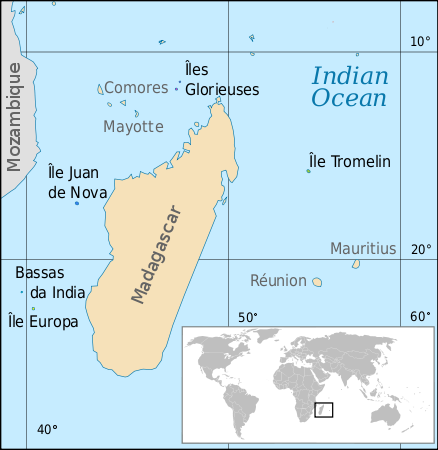 |
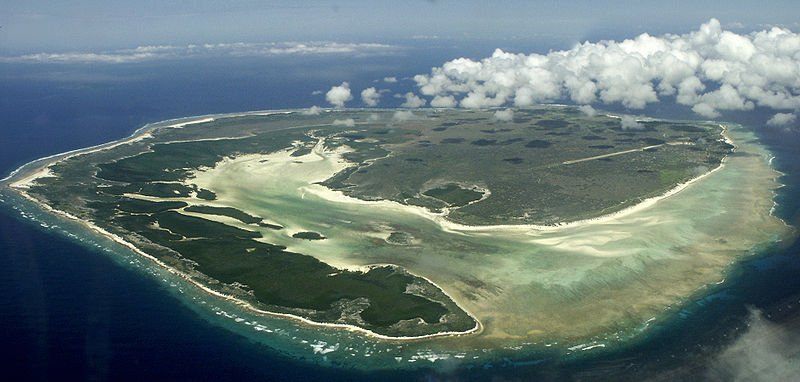 |
A jet black race of Portuguese goats were introduced to Europa Island in 1860 with the original French colonists. The colonists perished but the goats survived, well adapted to the dry environment. The goats today have a significant negative impact on rare plants on the island, such as the native Euphorbe arborescente.For information about the impact of introduced mammal species on native seabirds, visit this page. There are also photos from Dr. Russell's Europa Island trip online at the University of Auckland.
Today, Europa Island is guarded by a detachment of French military stationed there for 30-60 days at a time. Each cycle, the military are usually granted permission to fire up to 3 bullets in order to kill one goat for a celebration BBQ. Typically, the military aim for the oldest goat with the poorest meat but best horns, however, during our visit, the military marksman missed on all 3 occasions!
Alas we thought we were without goat meat, until a cyclone struck and we came across a mother and billy freshly dead. I prepared both the animals using my scientific dissection skills, and then my esteemed research colleague Fabien Jan cooked them over an open flame following a traditional Reunionnais recipe adapted to the local island – “Massala cabri.”
We were quite proud of ourselves only the French military were so embarrassed that we had successfully got a goat that they refused to eat any of the fine curry, which treated the old tough meat perfectly. Especially chagrined was the lieutenant who sported his “Swiss Alps Hunters t-shirt.”
Account provided by Dr. James Russell and Fabien Jan
Here is the recipe!
Massala Cabri
- 1 1/2 lbs goat meat
- 1 tbsp cooking oil
- Salt and pepper to taste
- 1 1/2 cups finely chopped onions
- 6 cloves of garlic
- 1 1/2 tbsp fresh ginger, grated
- 1 tbsp tamarind paste
- 1 1/2 tsp Masalé Réunionaise*
- 2 tsp dried curry leaves
- 1 tomato, finely chopped
- 1 1/2 cups water
Note: The recipe sent to me by Dr. Russell did not include measurements/amounts, so I've just noted the measurements I used when I made the recipe. You can change/adjust amounts according to your personal tastes.
Now I have to interject some of my own personal goat-meat buying experience into this story. If you follow my blog you know I've already searched for and failed to locate a good source for goat meat in my local area. Shortly after I last wrote about this on Travel by Stove, I did find an Indian grocery in Sacramento that has been hailed by several reviewers as "the best source for goat meat in Sacramento." So I went down there to buy some goat meat and lo, the damned power was out.
I didn't know that that was really a huge problem as long as it hadn't been out for hours, thus spoiling all the goat meat, but I guess I really had no way of knowing that for sure. At any rate I went to the meat counter and asked if I could get boneless goat meat, because you know my husband would just die if he ever had to pick meat off of a bone. The butcher said "yes," but I'm not really sure we breached the language barrier because when I told him I wanted a pound of boneless goat meat he said, "The power is out, so how would I cut it?" And I was thinking, "Um, with a knife?" but I didn't say that out loud because I figured I had to be missing something. So after that exchange I left without any goat meat.
Fortunately another desperate Google search turned up a second Sacramento butcher that carried goat meat, so I went there and bought four pounds of it. That butcher's English was a little better than the first, and it was that point that I learned that goat for curries is usually sold on the bone, cut into chunks with a bone saw which, of course, is electric. If you eat at Indian restaurants you may have had lamb curries like this; goat is treated pretty much the same way. I suppose you could get it boneless if you knew where to go, but at this point I was just happy to have some meat.
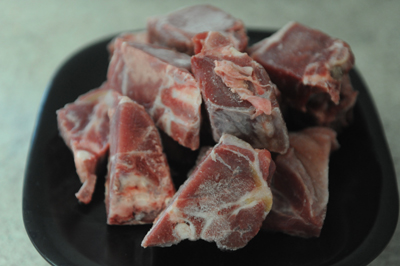 |
| Here it is, hard fought and won. Goat meat. |
It wasn't until later of course that I learned that April is the worst month to buy goat, because they don't start slaughtering the kids until May. If you buy goat meat in April you're getting older goat, and as it ages goat becomes tough and kind of muttony in the same way that sheep does. But since Dr. Russell's goat was also kind of old and tough, I figure we got the more authentic experience this way.
So here is the Masalé Réunionaise recipe:
(This recipe came from Celtnet; Fabien Jan's goat curry recipe simply said that they had used a masala powder sourced from Reunion Island, which would have been similar to this blend.)
- 2 tbsp coriander seeds
- 1 1/2 tbsp cumin seeds
- 2 tbsp fenugreek seeds
- 2 tbsp black mustard seeds
- 2 tbsp black peppercorns
- 1 tbsp ground turmeric
- 4 tsp cloves
Pois du Cap
- 8 oz lima beans
- 1/2 onion
- 3 cloves garlic, mashed
- 1 tsp fresh thyme
Rougail Citron
- 1 small lemon
- 1 small onion
- 1 fresh chili pepper (I used a jalapeno)
- 1 tbsp oil
Except for the Masalé Réunionaise recipe, all of the above recipes came from Fabien Jan and were cooked on the island during the 2008 expedition.
First let's make the Masalé Réunionaise, since you need it for the curry:
Put all the spices except the turmeric in a dry pan and cook over low heat, stirring constantly, until fragrant. Then transfer to a grinder or a mortar and pestle, and process until you get a fine powder. Add the turmeric and mix well. That's it!
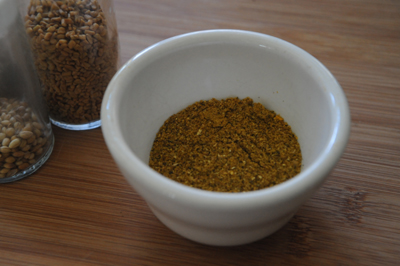 |
Heat the oil over a medium flame and brown the goat pieces. Add the salt and pepper, onions, garlic and ginger. Let cook for a few minutes to incorporate the flavors.
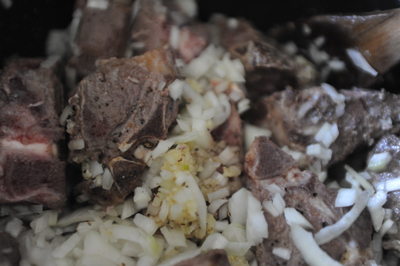 |
 |
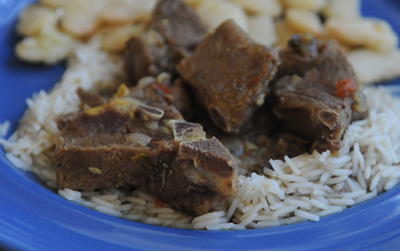 |
Boil the lima beans in water until they soften, then drain. Transfer to a pan and add the onion, garlic and thyme. Cook, stirring, until the onions are translucent.
 |
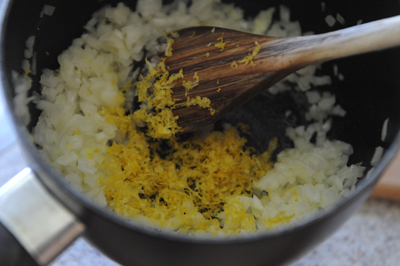 |
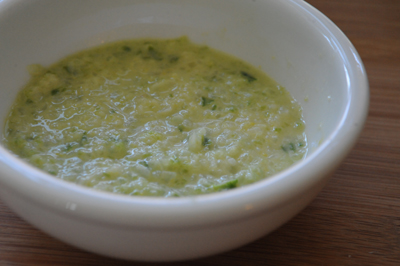 |
The lima beans also scared me, primarily because the lima bean has sort of a reputation as being the bane of childhood culinary experiences. I never ate them as a kid because it wasn't one of those things that my mom liked to torture me with (for her it was salmon loaf, which did not contain any actual salmon, and cream tuna peas on toast which looked like someone threw up on a slice of bread). But I feared lima beans as all children do, and I guess that followed me into adulthood. So this was my first experience as an adult with lima beans, and I have to say that I rather liked them. They tasted really good with the rougail citron.
So this was another one of those fun nowhere-land meals that I am so, so glad I pursued, and I will continue to keep these weird, uninhabited, remote places on my list in hopes that they will all turn up unique and interesting stories and recipes. And a big thank you to Dr. James Russell and Fabien Jan for being kind enough to share the recipes with me. I hope you'll check out their links.
Next week: The Falkland Islands
For printable versions of this week's recipes:











0 comments:
Post a Comment